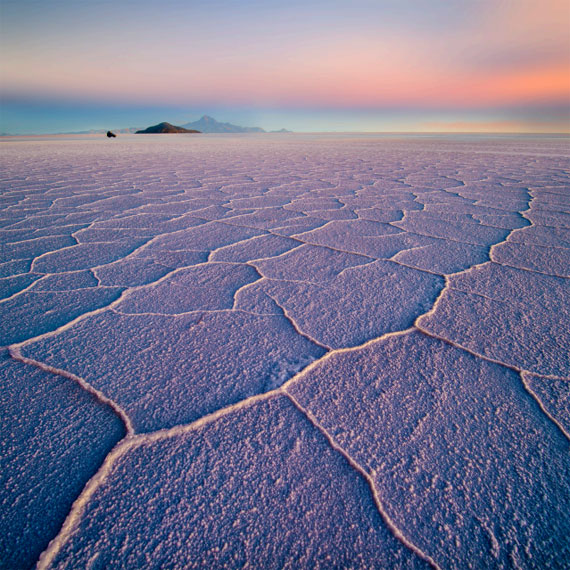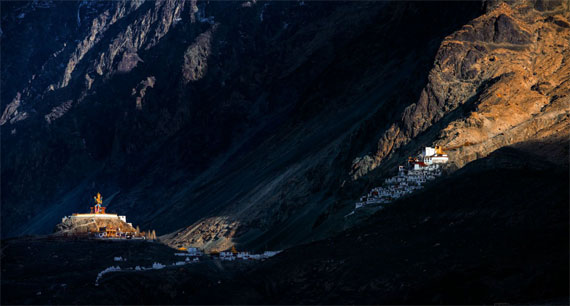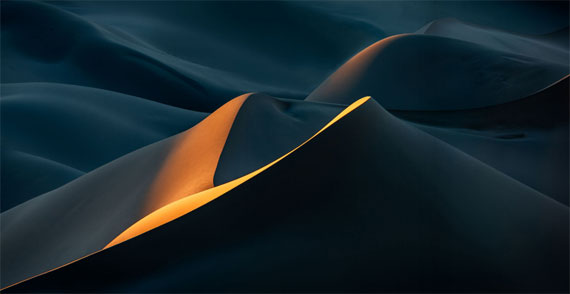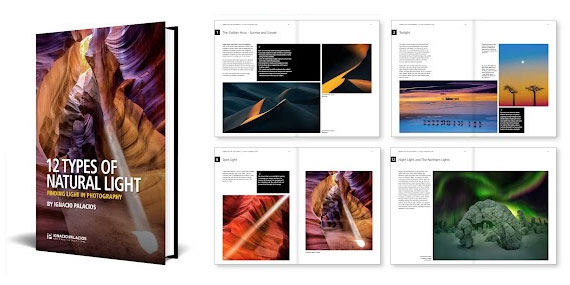Today’s article was kindly shared with us by Ignacio Palacios, author of the 12 Types of Natural Light which is designed to help photographers harness the incredible power of light.
The Golden Hour or Magic Hour is the time of day shortly after sunrise or before sunset when the light softens in its intensity.
A very flattering light, with the steep angle providing long shadows and pleasing contrast, which adds a beautiful depth and dimensionality. Harnessing the very diffused magical quality of light on offer at this time of day ensures that your imagery has the capacity to really pop. Another positive of the presence of this diffused light is that you are less likely to ‘blow out’ your highlights or lose detail in the shadows.

Salar de Uyuni composite, foreground photographed during sunset and background at sunrise.
The light at sunrise and sunset is a horizontal form of light. At this time of day, the light is parallel to the horizon and gently grazes your subject, giving it a strong three-dimensional appearance, creating the illusion of greater depth and the intensifying of textures. As the sun is low in the sky at these times, the light has to penetrate through many layers of atmospheric haze, pollution and dust before reaching the scene, which acts as a natural filter to remove blue light and assists to soften and creates a less intense quality of light, providing a warmth of reds, pinks and oranges, which is incredibly pleasing to the eye.
Objects lit directly by this type of light, seem to glow, revealing the finer details of the landscape!
Super-cool secret #1: Use light to lead and focus. Using light is a great way to draw your viewer’s eye to the focal point or subject in your image and helps to guide your viewer’s eye to travel throughout your image. In this capture, taken during a Photography trip to Ladakh, India, I have used light to directly focus on the first building and then lead the eye to the second, taking the viewer on a visual journey of discovery. This can be readily achieved by harnessing the light that is found at sunrise and sunset.

Golden Hour in Ladakh, India
Super-cool secret #2: Love the shadows. One of the most potent elements of light is the shadow it creates. When used strategically, the presence of shadows enhance our images by providing depth, perspective and drama. If well-composed, shadows can also help you lead your viewer’s eye to the subject or to tell a story.
The award-winning images that I captured in the Gobi Desert in Mongolia at sunrise are great examples of light during the Golden Hour and how powerful shadows can be. The beautiful sidelight during sunrise and the dramatic shadow it casts over the sand dune defines these images.

Gobi Desert at sunrise, Mongolia
If I’d shot this image with a soft front light, it wouldn’t be nearly as impactful.
Here are a few tips when working with shadows:
- Leverage shadows to add contrast to your image.
- Try black and white and/or IR (Infrared) to really bring out the shadows.
- Look for interesting shapes when you shoot that will create interesting shadows.
- Use shadows to make your images moodier.
- Let shadows play a supporting role to your leading subject. It’s a great way to subtly emphasize the subject.
- Use shadows to frame your image. Your exposure and direction of light can create gradual or dramatic frames around your subject
For Further Training:
Creating magnificent images requires the photographer to have full control over the tools at their disposal and understanding how light works is one of the most important elements to have in your creative arsenal. Grasping how light works is complex as it bounces off some subjects, passes through others, creates large or small shadows, influences colour and has a dramatic effect on your final image.
Understanding how to harness this incredible power of light requires you to understand the concepts of position, strength and colour and our success as photographers depend on our ability to predict and choose the best light or learn to work with what we have on offer.
This is a fantastic book for photographers of all skill levels. The book is full of beautiful images along with lots of helpful tips and techniques.
Found here: The 12 Types of Natural Light Guide
Like This Article?
Don't Miss The Next One!
Join over 100,000 photographers of all experience levels who receive our free photography tips and articles to stay current:







Leave a Reply